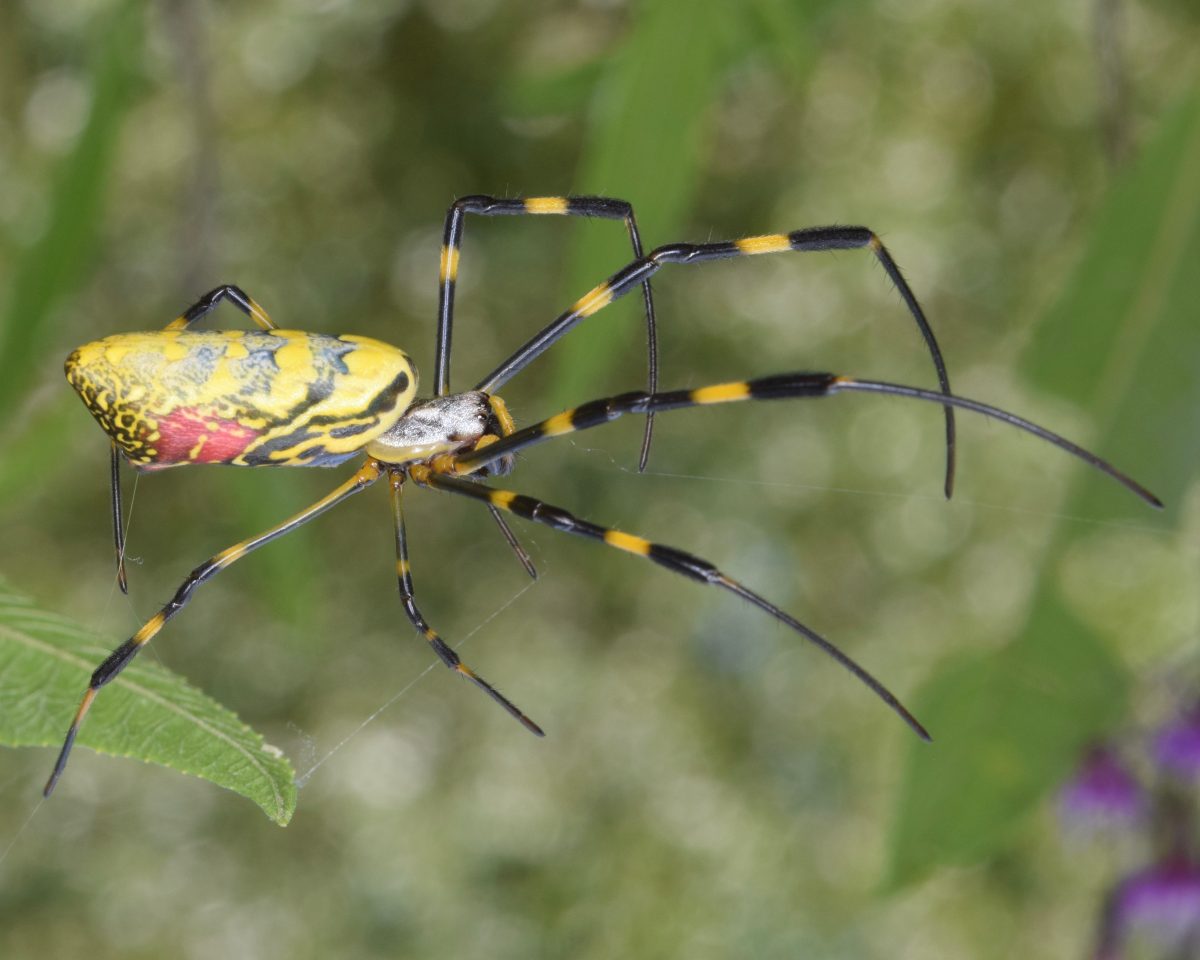A wicked looking spider with yellow and silver stripes is parachuting its way up the coast of the United States. The Jorō spider originated from southeast Asia, and in 2014 it was spotted in Georgia state. Ever since then, scientists have been studying both the invasive spider and its potential impact on the ecosystems that it was introduced to in order to make a conclusion on how to respond to this new inhabitant.
With the potential of Jorō spiders arriving in New Jersey any year now, it is important that people are informed on how to respond. Right now, the best response would be getting some beauty shots of this majestic arachnid. Many people’s first instinct when seeing a spider could be to kill it, but in the case of the Jorō spider, restraint should be shown, since they’re not as mean and scary as they look.
Dr. Coyle, an assistant professor in the Department of Forestry and Environmental Conservation at Clemson University, explains, “[The Jorō spiders are] unlikely to be dangerous to humans or pets other than being a nuisance in some situations.” Furthermore, the University of Georgia has done studies that found the Jorō spiders to be very timid. In their experiments, when most spiders are presented with a minor disturbance, they react by freezing for about a minute. Meanwhile, Jorō spiders were found to freeze for over an hour. Their meekness is hard to beat in the world of spiders, meaning that there is nothing to fear when coming into contact with one. This is easily a case of the spider being more scared of a person than the person is of it.
One thing that could (and maybe should) instill fear of the Jorō spiders is their ability to “balloon” when they are spiderlings. The Missouri Department of Conservation describes ballooning as spiders using their silk in order to catch the wind and disperse after hatching; or to summarize: it allows baby spiders to fly. While the only harm that ballooning could cause is the continued spread of this invasive species, it is still intimidating. As Dr. David Coyle said in an article by CBS News, “It happens, and people don’t even know that there are tiny spiders in the sky.”

The threat of their continued spread by ballooning is, however, very real. According to Penn State University, with the right weather conditions, “spiderlings are capable of moving tens to hundreds of miles via ballooning,” which allows them to spread out very far in a short amount of time. Another way they spread is by hitchhiking in transported goods such as shipping containers or potted plant materials, which is believed to be how they were introduced to the United States in the first place. Nonetheless, this innate ability to spread could spell misfortune and difficulties for potential future containment efforts.
According to CBS News, the Jorō spiders’ invasion started in the southeastern corner of the states, namely Georgia, and then they spread out to Alabama, North & South Carolina, Tennessee, West Virginia, and Maryland. It is believed that they will continue to spread further into the northeastern states, staying along the coast. NorthJersey.com reports that Dr. Coyle doesn’t know when exactly they will spread to New Jersey, but they believe that it is possible for the Jorō spider to reach New Jersey this year.
One major issue that the Jorō spider could present, as all other invasive species do, is a potential negative impact on native wildlife. The main risk they pose is overpopulating ecosystems, which would push out native spiders. According to Penn State, “Female spiders lay a single egg sac which contains 400–500 eggs,” which could pose threats, as Dr. Coyle explains in an article from NorthJersey.com, that “the Jorō will come in and crowd all of the other stuff out creating a biodiversity loss.” One benefit that could be seen from their increasing population is that they eat spotted lantern flies; however, this is not as clear of a benefit because, as in the same article Dr. Coyle explains, “Spiders are indiscriminate predators that will eat whatever comes into their webs.”
Since Jorō spiders are still relatively new, Dr. Coyle explains that there is much uncertainty of what impact they may have on the environment. Jorō spiders could be a friendly new addition to the neighborhood— one that causes no major disturbance, or they could outpopulate rarer native species, and cause major damage to biodiversity. This uncertainty around Jorō spiders’ potential impact on the environment means that keeping track of where the Jorō spiders have expanded to is crucial.
With the potential of Jorō spiders arriving in New Jersey any time from this year to 30 years from now, N.J. citizens should make efforts to stay educated on Jorō spiders. As more information is collected on them, there will be updates on what the proper response to their presence should be. However, if a Jorō spider is spotted in N.J. before then, remember to let it be – they’re very timid and magnificent creatures. Rather than declaring war against the little critter, just snap a picture!
Dr. Coyle recommends that anyone who sees a Jorō spider reports it to iNaturalist so that scientists will be able to keep track of where they are and implement efforts to research their impact on the environment. At this time, scientists have not yet advised that people who find them should squash them, so if one is found and needs to be moved, Dr. Coyle recommends using “a stick to move the web and spider to another location,” and warns against using fire or pesticides to eliminate the spiders.










Joni Bedell • Jan 22, 2024 at 8:21 am
I don’t like spiders but enjoyed this informative article!